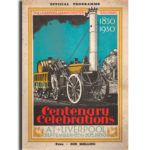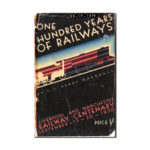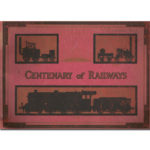Description
Although called to the Bar at the Inner Temple in 1898, he did not practice and During the Great War he was a technical examiner at the Munitions Inventions Department and managed the Ministry of Munitions “Journal.” Over a period of many years he had contributed to “The Locomotive” and other technical papers, usually on matters of historical interest, but not invariably, notable exceptions being his paper on “The Motion of Railway Vehicles on a Curved Line,” which shared the George Stephenson research prize awarded by the Council of the Institution of Mechanical Engineers in 1930, and his work on “The Resistance of Express Trains” — the first extensive study of aerodynamics as affecting railway trains. He evolved a patented system of locomotive compounding applied to LNWR 4-6-0 No. 1361 Prospero in 1915 but it is as a railway historian that he is best remembered.
These two essays are an essential starting point for anyone studying or beginning to research the early history of the steam locomotive. The run-up to the Railway Centenary Celebrations in 1825 saw a flurry of research and publications relating to the early history of railways. One of the features to emerge was that the “pre-history” of the railway and the locomotive was much more complicated and extensive than had previously been thought. As Dendy Marshall shows, by early 1830, just prior to the opening of the Liverpool and Manchester Railway, over 50 steam locomotives of varying sophistication and utility had been built.
Thorough as his work had been, Even Dendy Marshall did not net them all. In 1931 a painting came to light of a machine since identified as the “Steam Elephant” of 1815, probably by Buddle and Chapman, which worked with varying degrees of success until the mid 1820s. In 2002 Beamish Museum, assisted by Alan Keefe were able to build a full size working replica. Who knows what else may yet lie hidden in the records? Highly recommended.
PREVIEW BELOW – MAY TAKE A WHILE TO LOAD.






Reviews
There are no reviews yet.